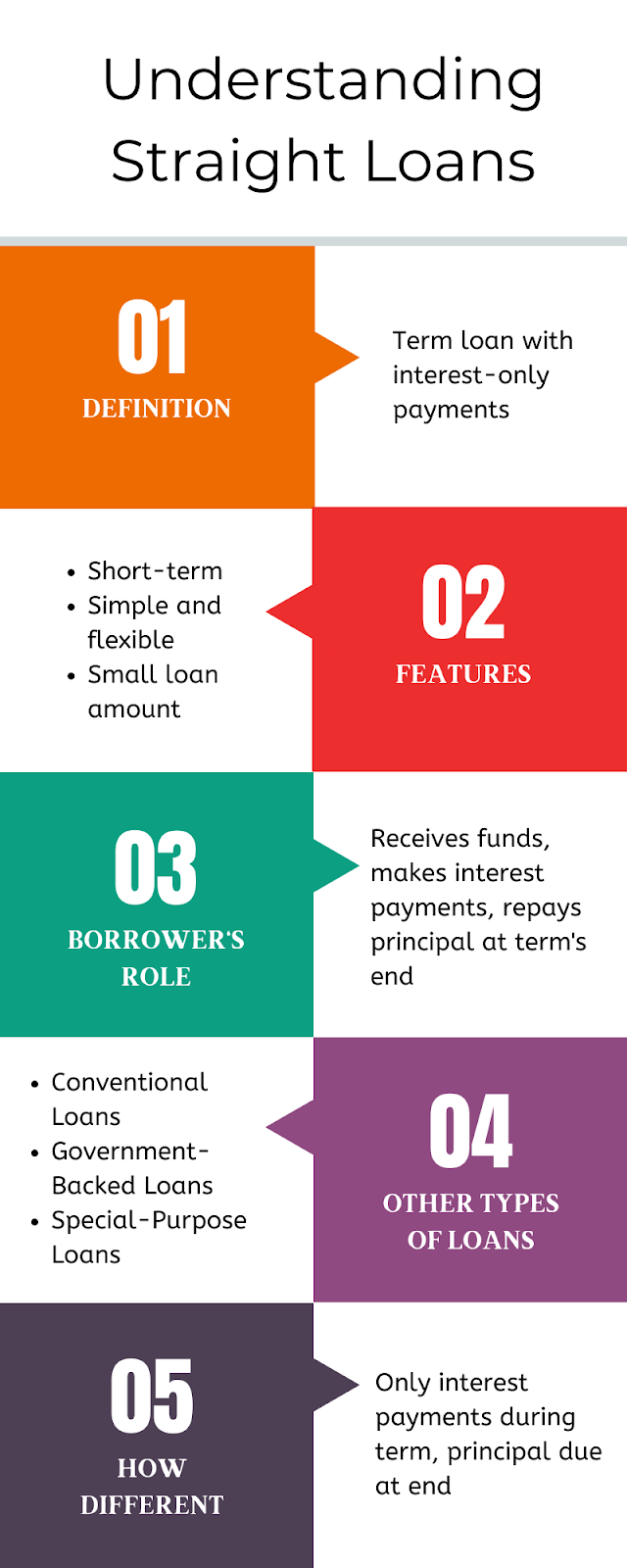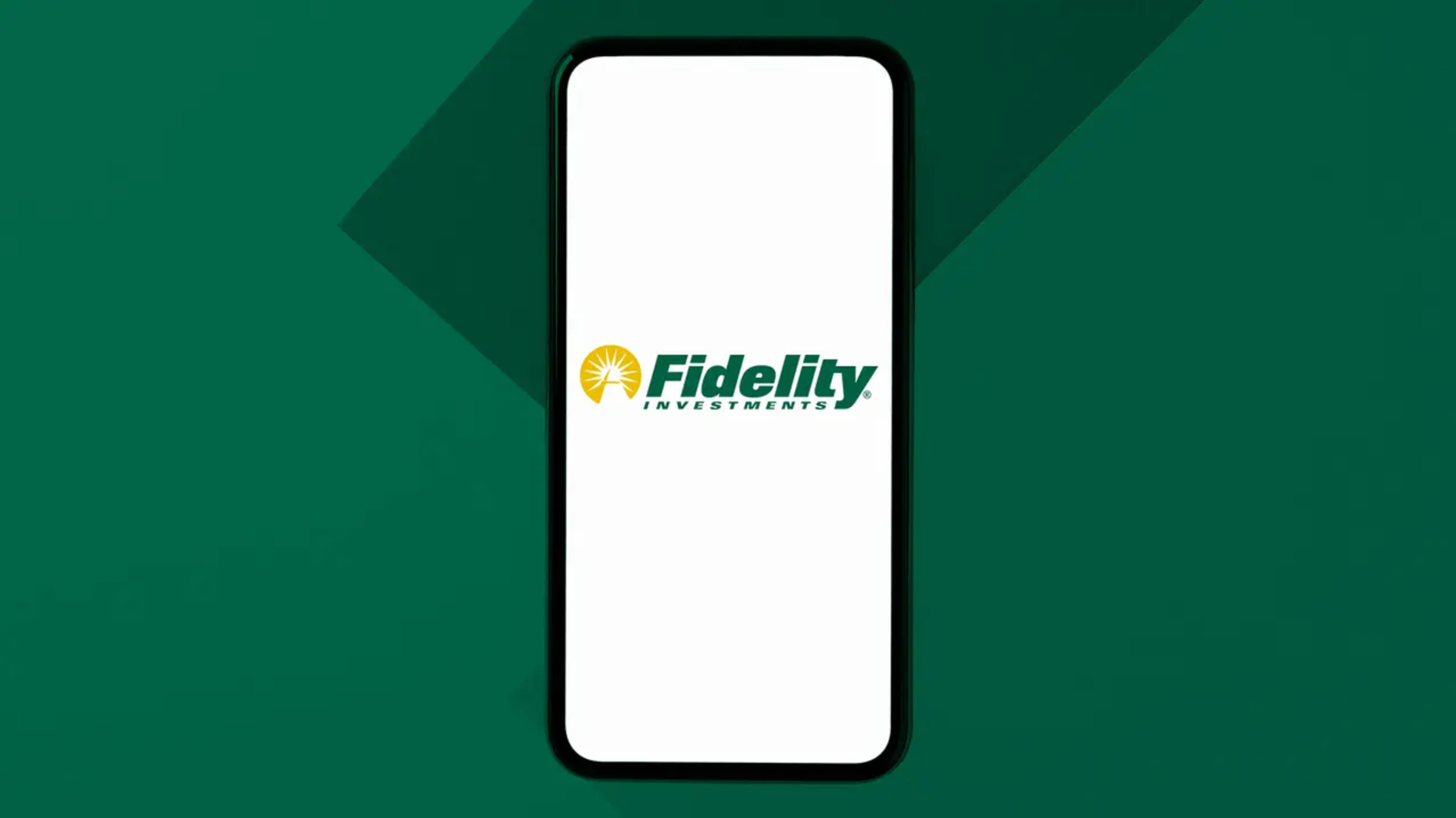Understanding Straight Loans: A Guide to Non-Amortizing Financing Options
A Complete Guide to Understanding Straight Loans - A type of term loan in which the borrower is responsible for making only interest payments throughout the term of the loan.
Abhinil Kumar
Author

Definition of a Straight Loan
A straight loan is a type of term loan in which the borrower is responsible for making only interest payments throughout the term of the loan. Unlike other types of loans, such as amortizing loans, straight loans do not require any principal payments until the end of the loan term. This means that the borrower only pays the interest on the loan amount without reducing the principal balance.
One of the main features of a straight loan is that it is typically a short-term loan, with a relatively small loan amount. It is commonly used by individuals or businesses who need immediate capital for a specific purpose, such as temporary cash flow needs or bridging the gap between two transactions.
Straight loans are also known for their simplicity and flexibility. The borrowing terms can be negotiated between the lender and the borrower, allowing for customized repayment terms based on the borrower’s specific needs.
Straight Loans vs Other Loans
When it comes to borrowing money, there are various types of loans available in the financial marketplace. Each type of loan has its own unique characteristics and terms. In this section, we will explore how a Straight loan differs from other types of loans. Let’s start by first looking at the individual components of these loans.
Basic Components of a Straight Loan
A straight loan is a type of loan where the borrower receives a fixed amount of money from a lender and pays it back with interest over a specified period. The basic components of a straight loan and their roles in the loan process are as follows:
- Borrower: The party receiving and responsible for repaying loan funds.
- Principal: The initial loan amount, which determines the interest and total repayment.
- Interest Payments: Regular payments made on the loan’s interest, not reducing the principal.
- Non-amortized Loan: A loan where the borrower pays only interest during the term, with principal due at the end.
- Loan Term: The period over which interest payments are made and the loan is to be repaid.
When to take a Straight Loan?
The most common purpose of a straight loan is to provide immediate funds to borrowers who have short-term financing needs. It can be used to cover various expenses such as inventory purchases, equipment upgrades, or working capital requirements. By obtaining a straight loan, borrowers can acquire the necessary funds quickly without having to worry about immediate principal repayments.
Other Types of Loans
Loans are financial instruments that allow individuals and businesses to borrow money for various purposes. They can provide immediate access to funds and help meet specific needs, such as purchasing a property, funding education, or starting a business. However, not all loans are created equal, as they cater to different requirements and circumstances. Understanding the different types of loans available is essential for making informed borrowing decisions. The most common types of loans include personal loans, home loans, auto loans, and student loans. Each type of loan has its own specific features, eligibility criteria, and repayment terms.
Different Types of Loans Available
- Conventional Loans: Mortgages not backed by the government, requiring a higher credit score and down payment.
- Government-Backed Loans: Insured by government agencies, offering lower risks and benefits like lower down payments. Examples include FHA, VA, USDA, and SBA loans.
- Seller Financing: The seller acts as the lender, with the buyer making payments directly to them, useful for those who may not qualify for traditional loans.
- Special-Purpose Loans: Tailored for specific needs like education or home improvements, with varied repayment terms. Available from banks, credit unions, and specialty lenders.
While repayment structure and the source of funds can vary, all of these loan types provide borrowers with options tailored to their specific needs and circumstances. Whether obtaining a conventional loan, a government-backed loan, seller financing, or a special-purpose loan, understanding the terms and benefits of each can help individuals make informed borrowing decisions.

Complete Guide to Straight Loans
Conventional Loans
Conventional loans are a type of mortgage loan that differs from straight loans in a few key ways. One significant difference is the requirement for a down payment. With conventional loans, borrowers are typically required to make a down payment of at least 10-20% of the home’s purchase price. This down payment serves as a form of collateral and reduces the lender’s risk.
Another difference is the amortization process. Conventional loans have a fixed repayment term, commonly 15, 20, or 30 years. During this term, borrowers make regular monthly payments towards both the principal balance and the interest. Over time, the payments gradually decrease the outstanding loan amount until it is fully repaid.
There are various types of conventional loans, including home equity loans. Home equity loans allow homeowners to borrow against the equity they have built in their property. This type of loan can provide funds for various purposes, such as home improvements, debt consolidation, or even education expenses. The advantage of a home equity loan is that the interest rates are typically lower compared to other types of loans, and the interest paid may be tax-deductible.
Government-backed Loans
Government-backed loans are loans that are backed by the federal government and are designed to make borrowing more affordable and accessible for individuals and businesses. There are various types of government-backed loans available, including FHA loans, VA loans, USDA loans, and Small Business Administration loans.
-
FHA Loans: These loans are backed by the Federal Housing Administration and are designed to help low-to-moderate income borrowers, generally requiring a lower down payment and lower credit score compared to conventional loans.
-
VA Loans: These loans are guaranteed by the Department of Veterans Affairs and are available exclusively to eligible veterans, active-duty military personnel, and surviving spouses. VA loans often offer competitive interest rates and flexible qualification requirements.
-
USDA Loans: These loans are guaranteed by the United States Department of Agriculture and aim to assist low-to-moderate income borrowers in rural areas. USDA loans have specific eligibility guidelines and can offer 100% financing, meaning no down payment is required in some cases.
-
Small Business Administration Loans: These loans are provided by the Small Business Administration and are aimed at helping small businesses access capital. SBA loans can be used for various business purposes, such as starting, expanding, or acquiring a business. They typically have more flexible terms and lower down payment requirements compared to conventional loans.
In terms of amortization and loan conditions, government-backed loans may offer more lenient terms compared to straight loans. They often have longer repayment periods, allowing borrowers to spread out their payments over a more extended period of time, which can result in lower monthly payments. Additionally, government-backed loans may have more flexible credit requirements and lower or no down payment options, making them more accessible to borrowers with limited financial resources. However, each type of government-backed loan has specific eligibility criteria and requirements that borrowers must meet.
Special-purpose Loans
Special-purpose loans are designed to meet specific financial needs or goals of individuals or businesses. These loans differ from standard loans as they are tailored to address a particular purpose, such as education, home improvement, or car financing. By providing financial support for a specific purpose, special-purpose loans offer borrowers the opportunity to secure funding with favorable terms and conditions. Whether it is obtaining an education, purchasing a property, or funding a business expansion, special-purpose loans play a crucial role in helping individuals and businesses achieve their goals and aspirations.
Conclusion
Straight loans offer a distinct financing solution for individuals and businesses in need of short-term capital without the immediate burden of principal repayment. Characterized by their simplicity, flexibility, and focus on interest payments, these loans can be an effective tool for managing temporary cash flow needs or bridging financial gaps. However, like any financial product, it’s crucial to consider the specific terms, conditions, and implications of a straight loan in relation to one’s financial health and objectives.
Before opting for a straight loan, potential borrowers should thoroughly research and compare it with other available loan options. Understanding the differences in loan structures, repayment methods, and eligibility requirements is essential for selecting the most suitable and cost-effective borrowing strategy. Additionally, leveraging additional resources and seeking advice from financial professionals can further guide individuals and businesses toward making prudent financial decisions.


